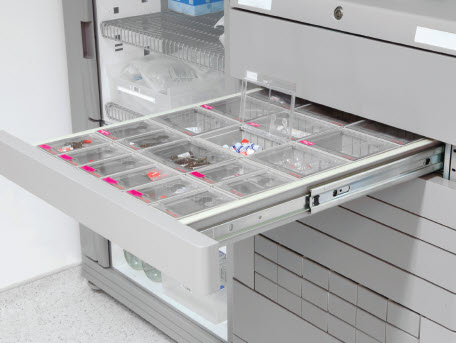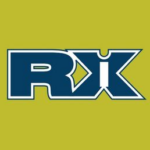Contributed by: Mark Garofoli, Clinical Associate Professor, Director of Experiential Learning, & Clinical Pain/Addiction Pharmacist at WVU School of Pharmacy
What is drug diversion in hospital pharmacies, and why is it a serious problem?
Drug diversion is the unlawful channeling of regulated medications from legal sources to the illicit market and its prevention is a serious consideration in any setting. When one building (a hospital) has a rather impressive continual supply of controlled substances (mind you, medications that enable surgeries, and manage the intense pain of so very many patients), and humans are involved (whether patients, strangers, or even employees), there will be concerns for diversion prevention.
How can drug diversion monitoring software help detect and prevent incidents?
Drug diversion monitoring software plays a crucial role in detecting and preventing the unauthorized use or even theft of controlled substances in healthcare settings. It is multi-faceted in that the software will typically track and analyze data to identify anomalies; provide real-time alerts; provide audit trails and compliance reporting conduct behavioral analyses; and sometimes even provide education and resources for the team. In essence, drug diversion monitoring software acts as a safeguard, using data driven insights to minimize risks and ensure medications are used appropriately, protecting both patients and healthcare institutions.
What role do opioid education platforms play in preventing diversion and misuse?
The prominent pain management interprofessional conference, PAINWeek, has long utilized the mantra “Education is the Best Analgesic”, and upon reflection, one can really digest that concept into the realization that without administration, clinician, and patient education, any one treatment may not have the most positive outcomes possible, let alone when factoring in drug diversion prevention.
Opioid education platforms play a crucial role in preventing diversion and misuse by raising awareness, enhancing knowledge, and promoting responsible practices among patients, healthcare providers, and the community alike. Impact is observed across key opportunities in opioid stewardship including safe prescribing practices (including a diverse treatment plan), proper medication handling, recognizing and responding to misuse, and even public awareness.
Ultimately, by providing accessible and accurate information and fostering a culture of accountability, opioid education platforms serve as an accomplice to clinicians as frontline defenses against the misuse and diversion of opioids.

How can community outreach technology help combat drug diversion and opioid misuse outside the hospital?
It takes a village! Community outreach technology plays an important role in combating drug diversion and opioid misuse outside the hospital by enhancing education, prevention, early intervention, and support. Mobile apps, websites, and social media campaigns can disseminate information about opioid risks, proper medication disposal, and recognizing signs of misuse. Telehealth platforms can connect at-risk individuals with counselors, addiction specialists, and support groups, reducing barriers to seeking help. Community data collection tools and predictive analytics can help identify geographical pockets of opioid misuse, directly guiding targeted interventions and resource allocation in a timely manner. Systems can provide automated alerts to warn communities about local overdose trends and other drug-related public health concerns.
What are the latest controlled substance diversion prevention technologies used in hospitals?
Artificial intelligence powers analytics on closed-loop tracking systems including automated dispensing cabinets (ADCs) with access control provide continual surveillance and monitoring tools that are very valuable to have specialized compliance and drug diversion prevention teams continually assess. It’s one thing to discover a theft from three months ago, it’s another to discover the same while the thief is still walking in the hospital hallway. These systems can even analyze human (employee) behavior over time to identify any potential concerning patterns associated with diversion such as frequent access to controlled substances at irregular working hours, which may not be a problem, yet should be mitigated.
What best practices can hospitals implement to prevent drug diversion in addition to technology?
The technology we’ve discussed can be great but is nothing without us humans steering the ship. Specialized experts should be identified (and hired) to lead these efforts across entire hospital systems, or even in local rural small hospital. Compliance and drug diversion prevention leaders can help to mold the culture within an institution in respect to diversion prevention through means including policy and procedure development, staff screening and support, and diversion prevention committees, to ultimately create a culture of accountability and awareness.
Why is reporting critical in drug diversion cases, and how should hospitals approach it?
It’s not a question of whether drug diversion will happen in a hospital setting will undoubtedly, and hopefully, be eventual compassionate help for someone including substance use disorder (addiction) treatment and the providing of resources when the situation involves those needs. It’s all about preventing continued harm, whether perceived or actual.
After all, an ounce of prevention is worth a pound of treatment, and perhaps a kilo of inevitable diversion.





